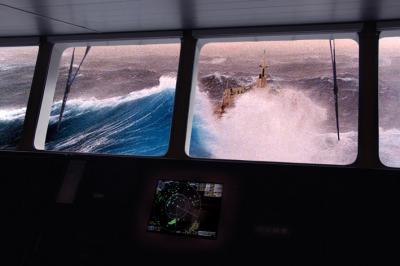There are already systems that detect ships at sea, but a group of engineers from the UAH, led by the researcher Raúl Vicen, has introduced a new development, involving "the use of artificial intelligence techniques and improvements in the templates used to select input data".
The team has come up with a new detection method "that outperforms the one that has generally been used until now, as well as offering the advantages of low computational costs, and which can also be used in real time".
The new system, the details of which are published in the journal IET Radar, Sonar & Navigation, involves firstly gathering information from radar data using a series of templates designed by the scientists. This phase makes use of regular radar tracking data (both horizontal and vertical), as well as other more advanced modes (diagonal).

A team of engineers from the University of Alcalá de Henares has developed a new system for better detecting ships in stormy seas, which has been published in the journal IET Radar, Sonar & Navigation. The technique consists of analyzing radar images and applying an algorithm based on artificial neural networks.
(Photo Credit: Rui Daniel, Christiaan Conover (cc). Photomontage: SINC.)
An artificial neural network architecture called a "multilayer perceptron" that is capable of learning from its environment, is then used. This makes it possible to differentiate between ships and waves in the confused radar images seen during storms.
Test passed in the North Sea
The technique has been successfully trialled using data from an X-band sea radar system (the most common in these kinds of devices, with frequencies of between 7 and 12.5 gigahertz), located on the German FINO-1 research platform in the North Sea.
"The fact that we obtained results with real data shows that this method can be installed in ship and ocean platform radar systems, without any problem", the authors explain.
According to the study, this system offers "substantial" improvements in comparison with the conventional systems used for detecting ships, such as the CA-CFAR technique (Cell Averaging-Constant False Alarm Rate). Radar systems usually use these algorithms to detect targets among the waves, or 'sea clutter', but the proposed system "outperforms the current systems in terms of its detection rates".
Source: FECYT - Spanish Foundation for Science and Technology